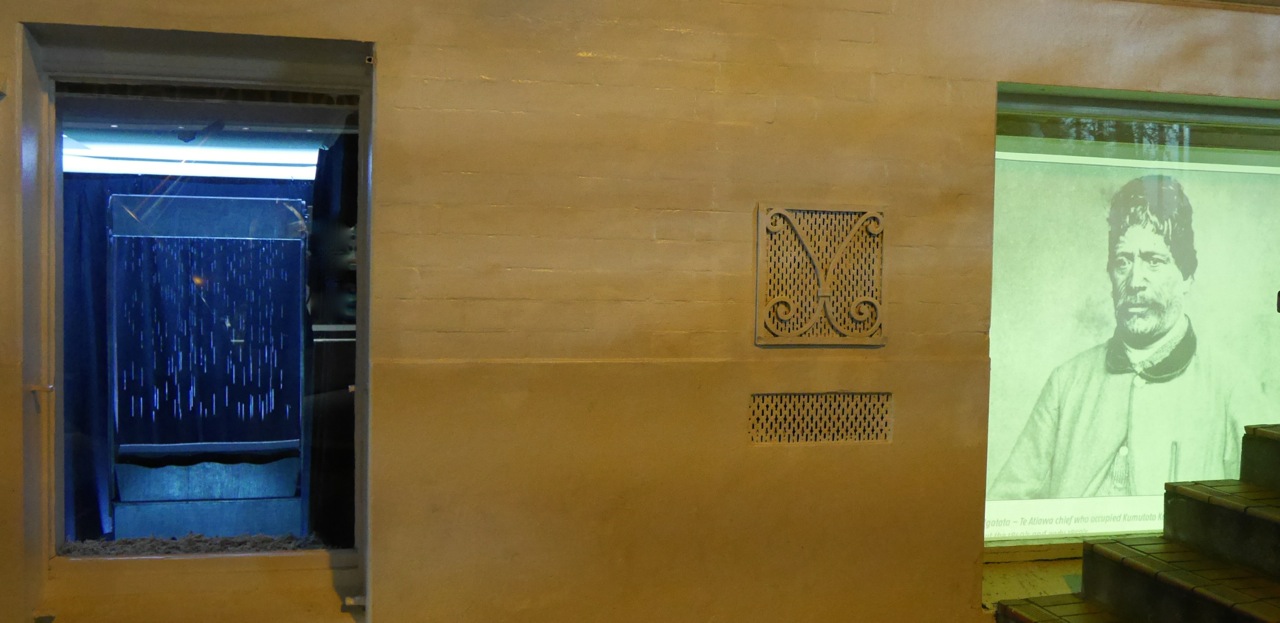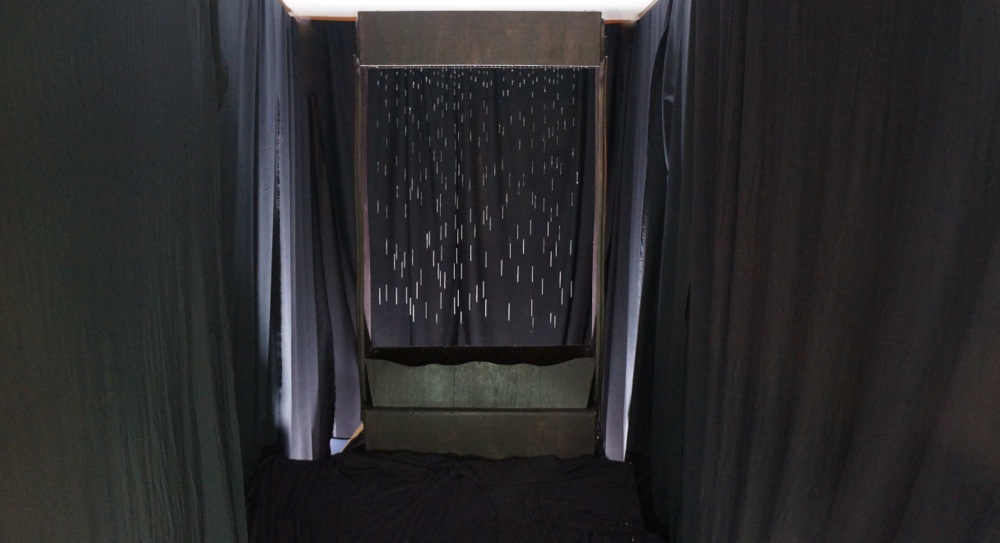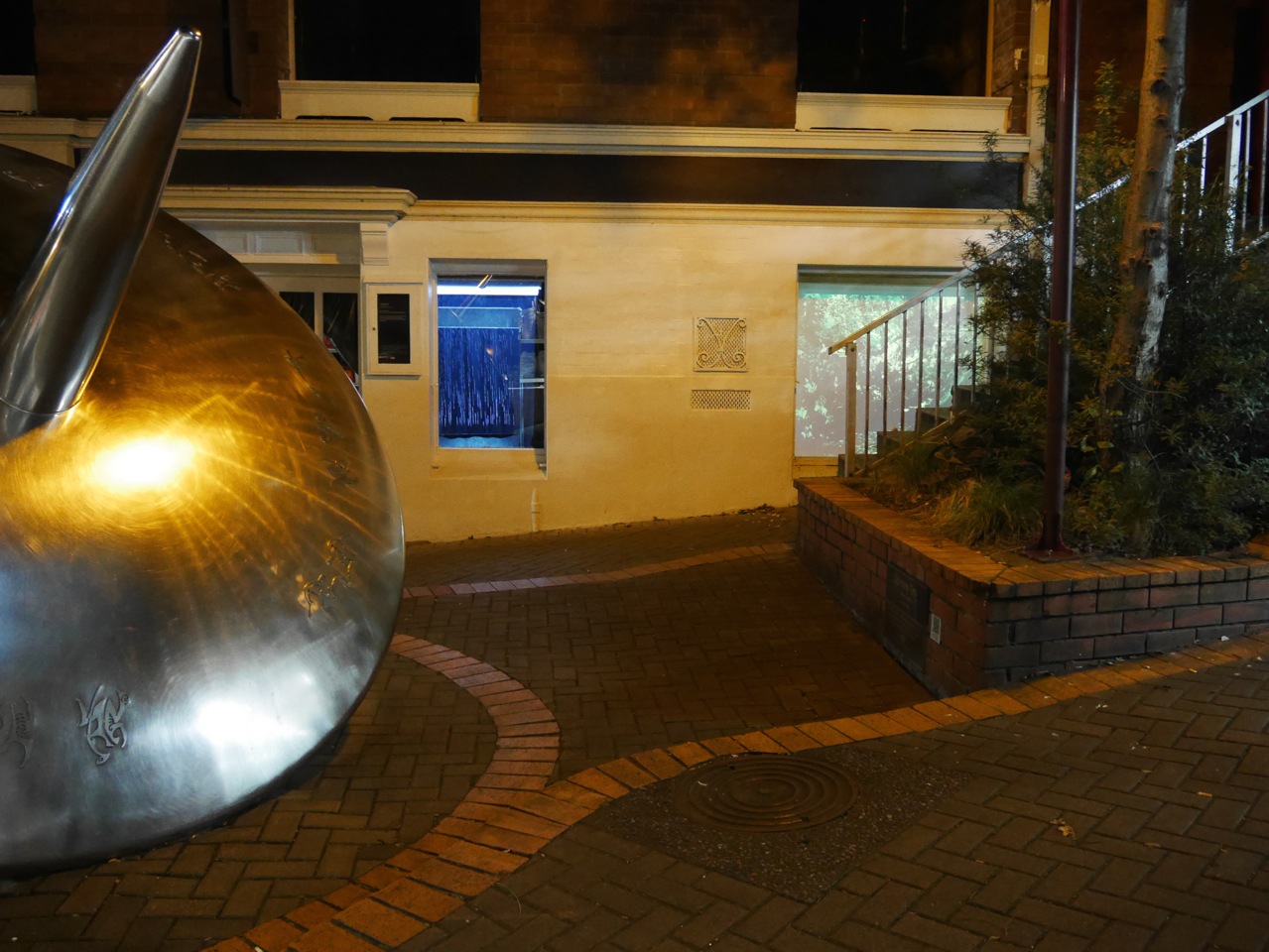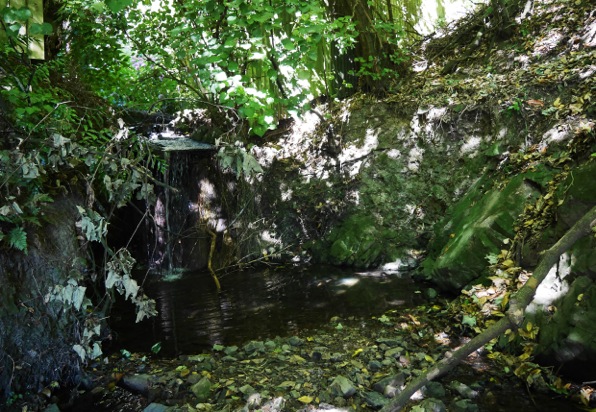








Your Custom Text Goes Here
Kedron Parker and Bruce McNaught
Property partner: Cornerstone Properties
11 Woodward Street
From 16 February 2015
Images: Denise Batchelor, Gabrielle McKone, Bruce Mcnaught, Leo Ryan and Kedron Parker
The Wet Index is a rain curtain that displays water collected from the source of the Kumutoto Stream, which flows in storm water pipes underneath Woodward Street to the harbour.
In a small shop window at 11 Woodward Street, passers by can enjoy a glimpse of the elegance of fresh stream water before it hit the storm drain. Another window displays images of the stream, its pathway, and Te Atiawa tupuna.
Rain is fresh water, but in the city it often becomes storm water, instead of streams.
Near Victoria University, conservation biology students are restoring a hillside known as Kumutoto Forrest, where the source of the stream remains beautiful and wild for a short stretch just before it enters a stormwater culvert.
The Wet Index plays on the thin and sometimes arbitrary line between fresh water and waste water in the urban context.
The Wet Index joins Kedron Parker’s Kumutoto Stream, a permanent sound installation in the pedestrian tunnel running under The Terrace from Woodward Street. That installation (the first permanent media based public artwork in the city) imagines the experience of walking along the stream before cement took over the Terrace, and is adjacent to the original site of Te Atiawa’s Kumutoto Pa.
Both works ask questions about how we value water, and when is it worthy of our stewardship?
Taken together, they consider the past, present and future state of Wellington in relationship to the land and waterways upon which it is built.
Kedron Parker and Bruce McNaught
Property partner: Cornerstone Properties
11 Woodward Street
From 16 February 2015
Images: Denise Batchelor, Gabrielle McKone, Bruce Mcnaught, Leo Ryan and Kedron Parker
The Wet Index is a rain curtain that displays water collected from the source of the Kumutoto Stream, which flows in storm water pipes underneath Woodward Street to the harbour.
In a small shop window at 11 Woodward Street, passers by can enjoy a glimpse of the elegance of fresh stream water before it hit the storm drain. Another window displays images of the stream, its pathway, and Te Atiawa tupuna.
Rain is fresh water, but in the city it often becomes storm water, instead of streams.
Near Victoria University, conservation biology students are restoring a hillside known as Kumutoto Forrest, where the source of the stream remains beautiful and wild for a short stretch just before it enters a stormwater culvert.
The Wet Index plays on the thin and sometimes arbitrary line between fresh water and waste water in the urban context.
The Wet Index joins Kedron Parker’s Kumutoto Stream, a permanent sound installation in the pedestrian tunnel running under The Terrace from Woodward Street. That installation (the first permanent media based public artwork in the city) imagines the experience of walking along the stream before cement took over the Terrace, and is adjacent to the original site of Te Atiawa’s Kumutoto Pa.
Both works ask questions about how we value water, and when is it worthy of our stewardship?
Taken together, they consider the past, present and future state of Wellington in relationship to the land and waterways upon which it is built.